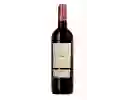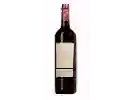
Château Vignal la BriePécharmant
This wine generally goes well with
Details and technical informations about Château Vignal la Brie's Pécharmant.
Discover the grape variety: Grosse Arvine
Most certainly originating from the Swiss Valais - Martigny and Fully vineyards - it is the result of a natural intraspecific crossing between the rèze and a child of the arvine with which it should not be confused. Today, grosse Arvine is practically no longer cultivated and remains completely unknown in France, as in all other wine-producing countries.
Last vintages of this wine
The best vintages of Pécharmant from Château Vignal la Brie are 2016, 2017, 2015
Informations about the Château Vignal la Brie
The Château Vignal la Brie is one of of the world's greatest estates. It offers 10 wines for sale in the of Pécharmant to come and discover on site or to buy online.
The wine region of Pécharmant
The wine region of Pécharmant is located in the region of Guyenne of South West of France. Wineries and vineyards like the Château de Tiregand or the Château Terre Vieille produce mainly wines red, white and sweet. The most planted grape varieties in the region of Pécharmant are Merlot, Cabernet-Sauvignon and Cabernet franc, they are then used in wines in blends or as a single variety. On the nose of Pécharmant often reveals types of flavors of non oak, plum or dark fruit and sometimes also flavors of black fruits, black cherries or cedar.
The wine region of South West
The South-West is a large territorial area of France, comprising the administrative regions of Aquitaine, Limousin and Midi-Pyrénées. However, as far as the French wine area is concerned, the South-West region is a little less clear-cut, as it excludes Bordeaux - a wine region so productive that it is de facto an area in its own right. The wines of the South West have a Long and eventful history. The local rivers play a key role, as they were the main trade routes to bring wines from traditional regions such as Cahors, Bergerac, Buzet and Gaillac to their markets.
The word of the wine: Friand
A light, easy-drinking wine with an immediate and fresh fruitiness.














